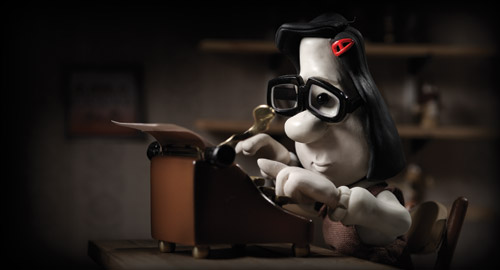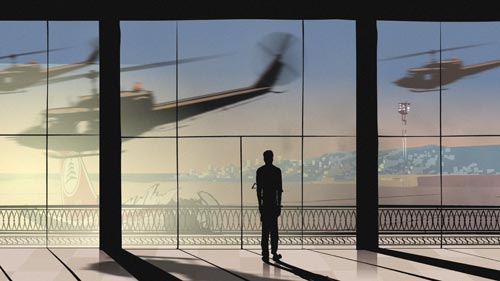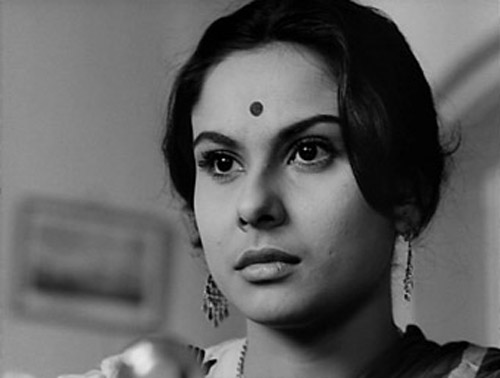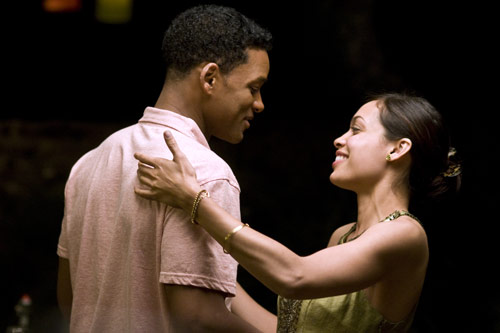As Israel again goes to war against one of its neighbors, hoping to create a sense of security for itself, Ari Folman’s anti-war animated feature Waltz with Bashir couldn’t be more timely. It focuses on one of Israel’s first “defensive invasionsâ€--when it entered Lebanon in 1982 with the hope of rooting out the PLO. That invasion “ended†with Israel occupying a swath of southern Lebanon for two decades.
The stench of war, however, was particularly foul, as hundreds of Palestinians were massacred in the Sabra and Shatila camps by members of the Lebanese Phalangist party while Israeli soldiers stood outside. Whether the Israeli army was complicit in the killings has always been disputed. Israeli soldiers were surrounding the camps, but it’s unclear how much they realized of what was going on, though later an Israeli government commission found General (later Prime Minister) Ariel Sharon “personally responsible.â€
Folman was an Israeli soldier and part of the ground forces during that invasion, and yet he recalls little of what happened, except for a strange dream he keeps having, rendered in gorgeous yellow-hued animation in the movie. Wondering why he can’t remember, he approaches his psychiatrist, who encourages him to explore his dreams and memories by interviewing fellow soldiers who might’ve been there with him. Those conversations were originally shot on film and then animated by Yani Goodman. These are intercut with scenes that Folman does remember of his time in Lebanon, including various battles and, in a moment that consciously evokes Apocalypse Now (the mother of all Jungian war films), surfing.
The focus on dreams and memories, repressed and remembered, is incredibly provocative, and the simple but effective animation works far better than live action photography could. The animation dovetails particularly well with the Jungian/Freudian imagery on display, giving the entire film an archetypal quality. That threatens to minimize the horrors of war, but Folman always knows when to pull back, when to allow the details of an interview to ground the material. Only an unnecessary porn-tape interlude breaks the spell. The film’s soundtrack, however, is particularly effective, both in its use of effects and music. The musical choices complement the material at times but also cut across it at others, creating a stimulating sense of discontinuity that meshes with the overall themes.
While the movie uses the memories of Folman and his fellow soldiers as the template, the idea of cultural memory is clearly what’s in view. Waltz with Bashir asks how we can forget the past--this in a world in which “Never Forget†is a powerful rallying cry--and continually repeat the same mistakes. Those come into shocking view in the film’s final, powerful moments. This is a must-see film, especially now.













